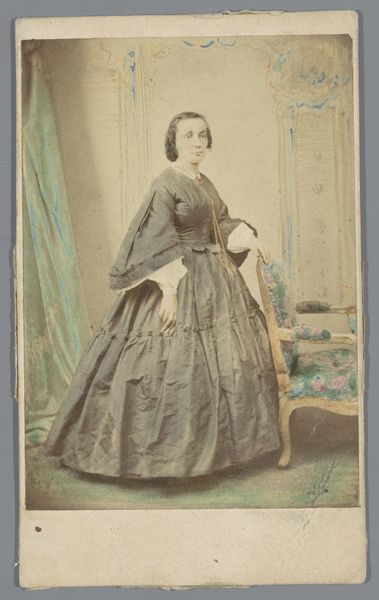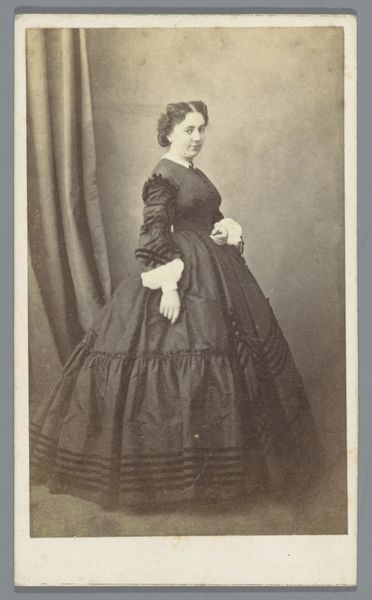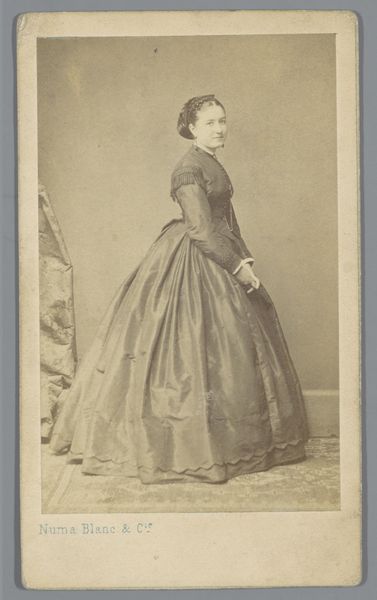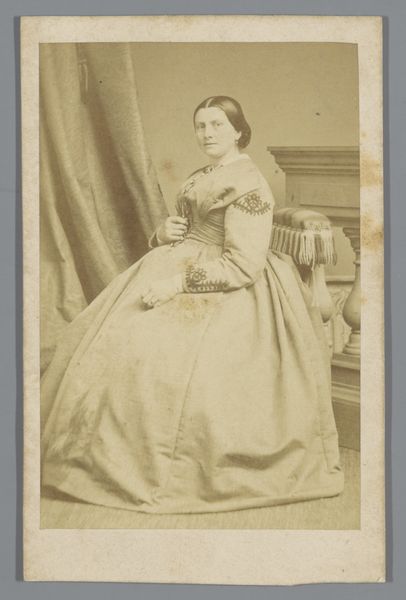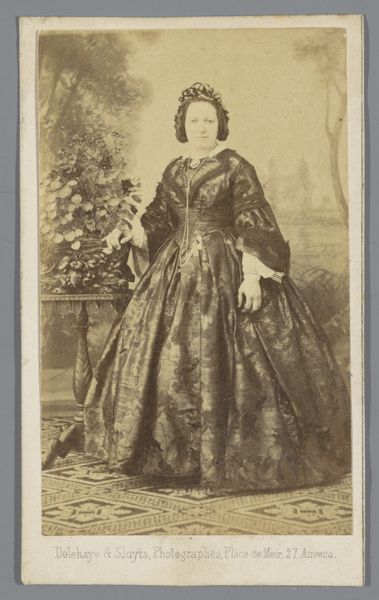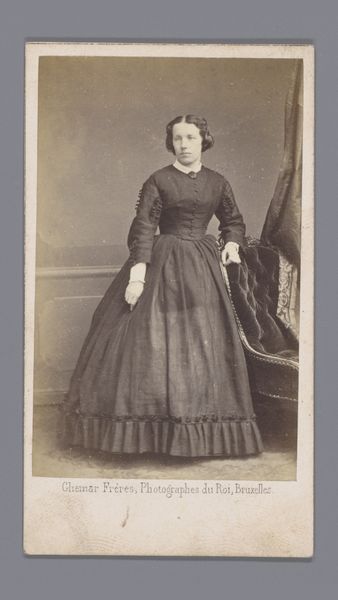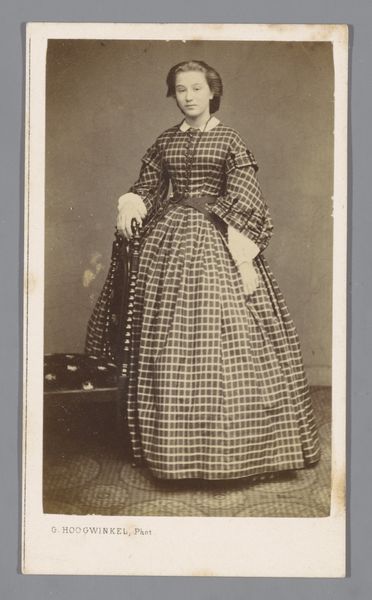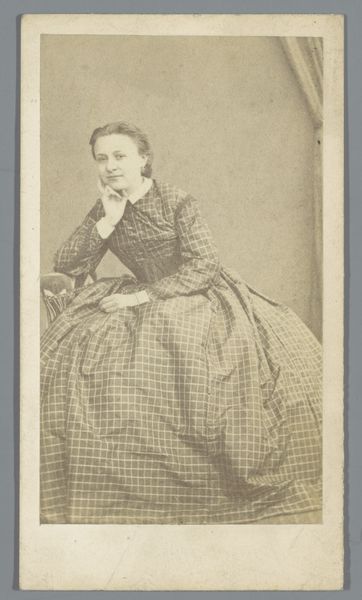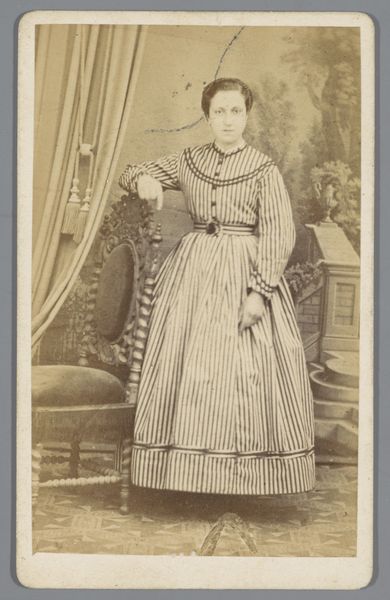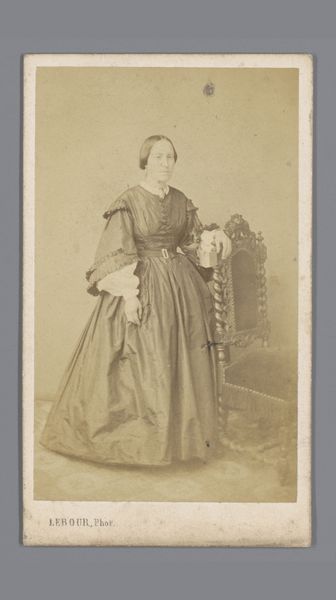
photography, albumen-print
#
portrait
#
photography
#
albumen-print
Dimensions: height 102 mm, width 62 mm
Copyright: Rijks Museum: Open Domain
Editor: This is an albumen print by Jules Géruzet, "Portrait of an Unknown Woman by a Chair," created sometime between 1865 and 1866. It’s such a formal image. The texture of the dress is so striking against the smooth backdrop. What jumps out at you when you look at it? Curator: The meticulous composition compels my attention. Note the tonal gradation—the subtle shift from light to shadow which gives the image a sculpted effect. Consider how the patterning on the dress and chair both contrast with and mirror each other. Do you notice how the light seems to illuminate the figure from the front, yet a curtain is slightly behind? What affect does this create? Editor: Yes, that lighting is unusual! The patterned surfaces all pull your eye to different focal points. But if this weren’t a portrait, would that complexity of textures still be the focal point? Curator: Irrespective of its status as a portrait, the interplay of textures would be crucial. The arrangement of tones—dark dress, pale face, dark curtain—creates visual interest. There’s a certain tension achieved through the balance and asymmetry within the composition, drawing us to further examine the figure’s position in relation to the chair. This placement becomes its own commentary on stability versus vulnerability. Editor: It’s like the artist set up the photo to have this internal, geometric tension! Curator: Precisely! The forms of this piece demonstrate an acute understanding of visual mechanics and semiotic intention, beyond just capturing a likeness. Editor: It’s interesting to think about the choices the photographer made with textures and shading. It shows so much thought beyond just the subject herself. Curator: Indeed, and remember this meticulous selection is a product of careful planning. Photography in this era demanded precision in both arrangement and execution. It really speaks to a formal consideration that the modern viewer can take for granted!
Comments
No comments
Be the first to comment and join the conversation on the ultimate creative platform.
